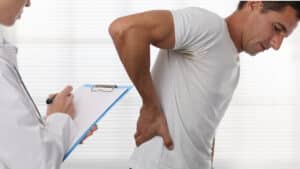Physiotherapy Waidfuss | Your Physiotherapy Practice in Zurich
Physiotherapy Waidfuss | Your physiotherapist
Your personalized physical therapy begins with a comprehensive assessment of your functional limitations and areas of pain. This is what we call "physiotherapy examination." We then construct a treatment plan based on your personal needs, physical condition and goals.
In doing so, we take a holistic approach. This means that we analyze your entire body and work closely with referring physicians to achieve the best result for you. Our goal is your health and well-being!
We will be happy to provide you with an individual training program for home, so that you can maintain your long term health and expedite your rehabilitation. If you wish, you can also visit our Small group courses. in Zürich Wipkingen
The areas of use
The focus of Physiotherapy is the ability of the human body to move and function. To ensure this, there are different methods and techniques. These include the well-known gymnastics without and with equipment, mobilization techniques and neural training. Physiotherapy is suitable for both children and elderly people. Very often physiotherapists treat patients from the field of orthopedics and rheumatology.
The most common rehabilitation measures take place after bone fractures, torn ligaments or in cases of wear and tear. In the case of neurological diseases such as Parkinson's or multiple sclerosis, physiotherapeutic methods are an important part of the treatment. It is then a matter of maintaining and building up strength in order to be able to permanently maintain everyday skills such as standing or walking. Physiotherapy can support the specialist area of internal medicine in the treatment of respiratory diseases, e.g. asthma. Other physiotherapeutic measures are prescribed by doctors in cases of heart attack, high blood pressure or incontinence.
Physiotherapy goals
The basic purpose of physiotherapy is to restore and improve the body's mobility and coordinative mechanisms. In order to achieve this goal, the physiotherapists discuss the procedure together with the patient. Plans for the individual steps are determined in order to achieve short- and long-term improvements. For example, after disc surgery, the short-term goal is to reduce pain and strengthen back muscles. This stabilizes the spine and preventively prevents a relapse.
In the long term, the sick person should be able to resume his or her occupation and move about in everyday life without problems. If the illnesses are in the neurological area, physiotherapy can be a long-term therapy element. The short-term quick help here can be to relieve the pain and tension. In the long term, strength training and balance exercises can help keep the motor deficits at a consistent level. As a preventive measure, physical therapy can help compensate for weak points in posture, for example through gait training.
Different methods are used in physiotherapy
Movement therapies are an important element of physiotherapeutic procedures. Manual therapy can be used to identify and treat physical dysfunctions. Treatment is carried out using special handgrip and mobilization techniques. It also supports regeneration after sports injuries such as a torn cruciate ligament. Strengthening and coordination exercises enable affected athletes to regain their usual performance levels more quickly.
Bobath therapy stabilizes the body's natural movement patterns. If such processes are disturbed, movements appear angular and out of round. In adults, doctors prescribe this therapy primarily for neurological diseases such as multiple sclerosis or Parkinson's disease.
Vojta therapy helps patients who have brain damage and coordination disorders. Certain stimulation points of the body are stimulated by pressure. This triggers innate movement patterns, especially reflex crawling and reflex turning. The procedure is used for children and adults.
PNF stands for proprioceptive neuromuscular facilitation. The basic idea is to improve the perception of one's own body and posture. This leads to a better interaction of muscles and nerves. The goal is to master everyday movements such as walking, climbing stairs or standing. The procedure also helps with swallowing or breathing difficulties that can occur as a result of a stroke or Parkinson's disease.
Respiratory therapy can be prescribed for diseases of the respiratory tract. It is particularly helpful when an illness is accompanied by severe coughing, mucous sputum, and shortness of breath. The narrowed airways make breathing an ordeal for an affected person. Examples of particularly severe diseases are chronic obstructive pulmonary disease, or COPD, and cystic fibrosis.
Post-exercise training rebuilds muscles and gets ligaments and tendons used to loads. After a cruciate ligament tear, physiotherapy helps to get fit again more quickly. It also helps with persistent discomfort in the back and the onset of muscle pain.
Heat therapy helps against pain and eliminates circulatory disorders. With the help of different techniques, the metabolism is additionally activated and the muscles are loosened.
Cold therapy uses ice packs and compresses, cold gas and air. This reduces pain and prevents the expansion of swelling. This mostly makes sense directly after the trauma.


